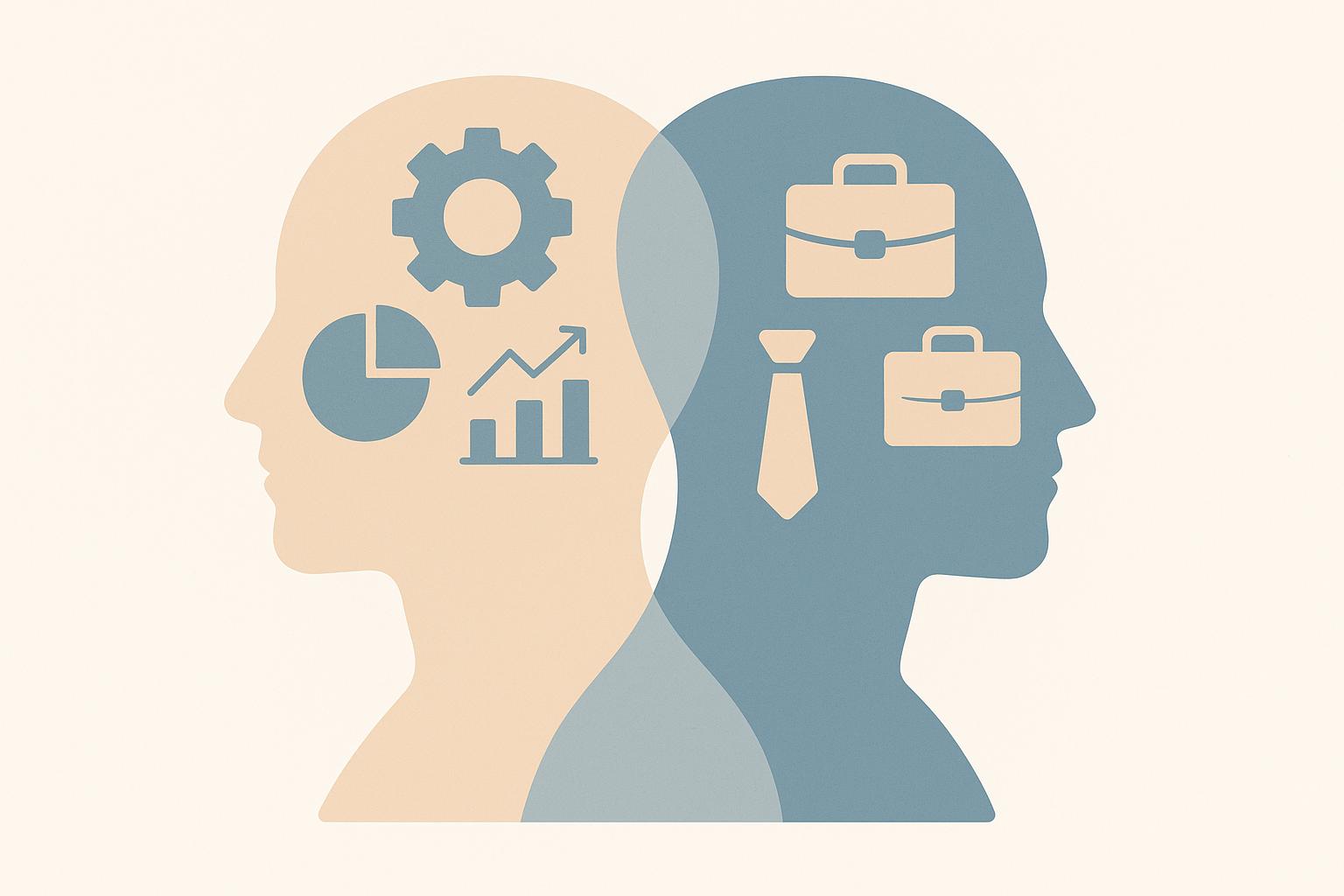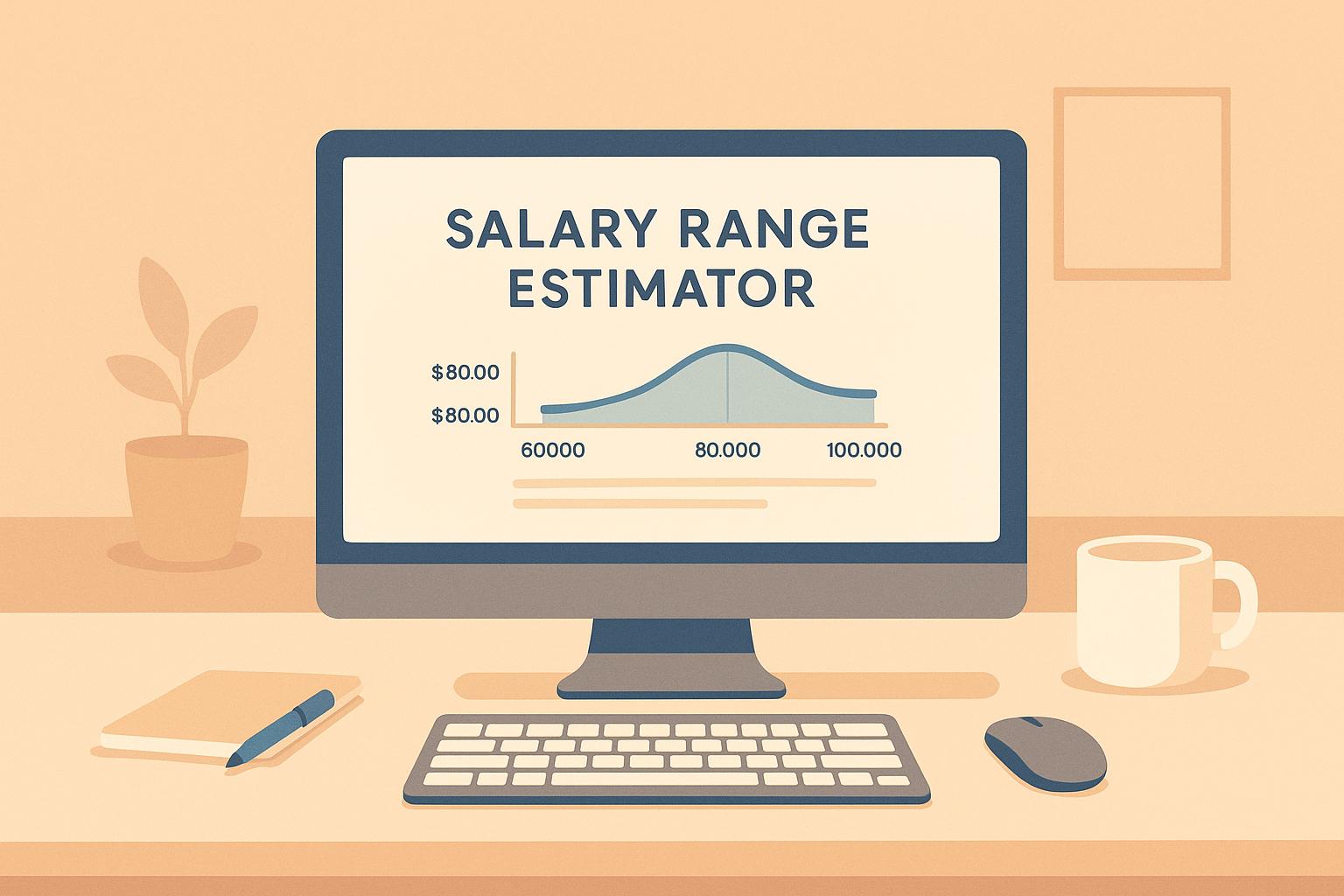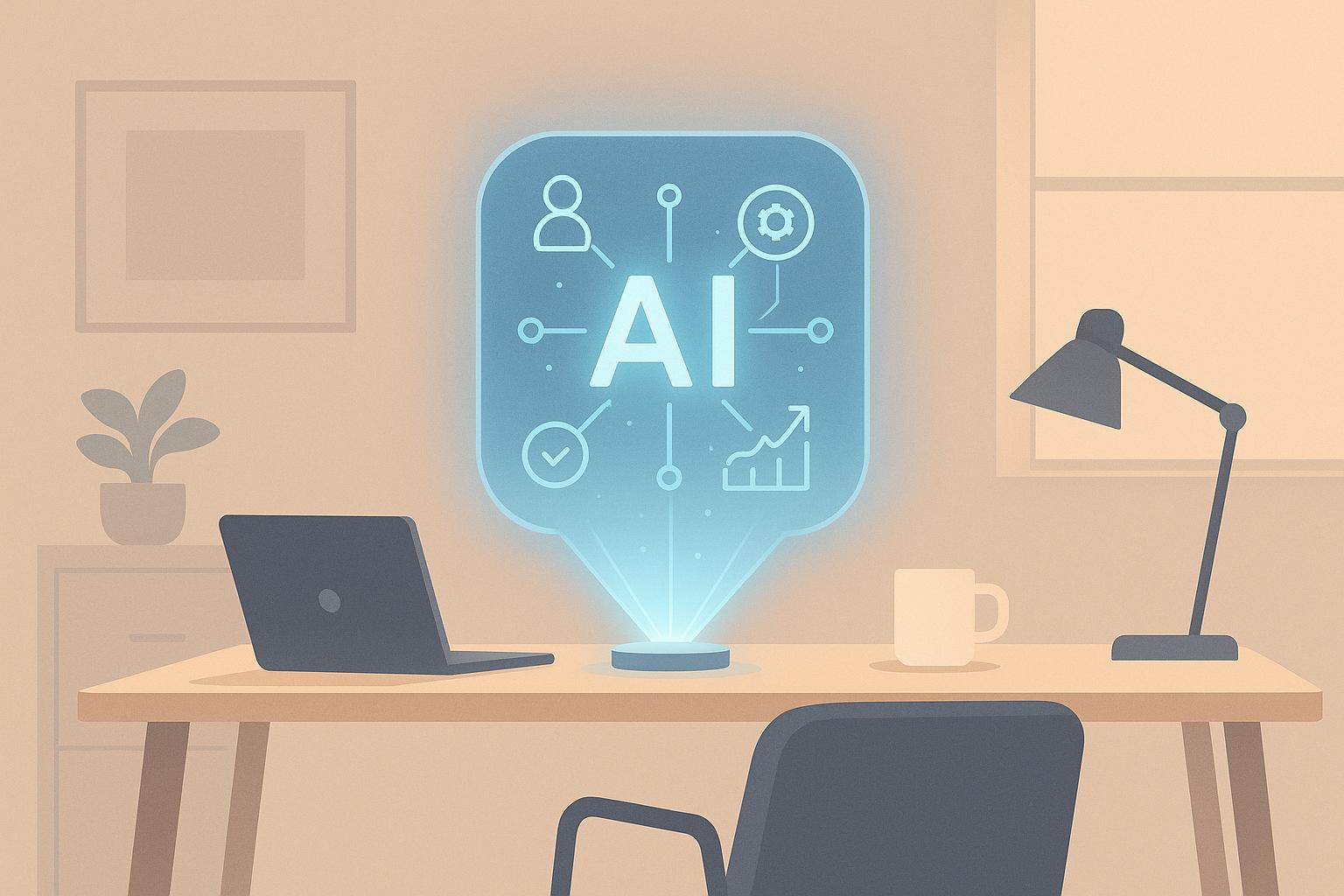AI tools and manual methods each have strengths in job applications. AI excels in speed, accuracy, and handling large volumes, making it ideal for entry-level or high-volume roles. Manual applications allow for personalization, showcasing soft skills, and building connections, which are crucial for executive or niche positions. Combining both approaches can maximize success.
Key Takeaways:
- AI Tools: Fast, efficient, 85% matching accuracy, great for initial screening, but limited in assessing soft skills and cultural fit.
- Manual Applications: Personalized, strong for networking and showcasing unique qualifications, but time-consuming and prone to errors.
- Best Approach: Use AI for initial tasks (e.g., resume optimization, job matching) and manual methods for networking and personalizing applications.
Quick Comparison:
| Criteria | AI Applications | Manual Applications |
|---|---|---|
| Processing Speed | 10 minutes per batch | Several hours per application |
| Accuracy | 85% match rate | 60% match rate |
| Personalization | Limited customization | Highly personalized |
| Bias Management | Reduces bias | Subject to human bias |
| Soft Skills | Basic keyword matching | In-depth assessment |
| Best For | Entry-level, high volume | Executive, niche roles |
Related video from YouTube
How AI Job Applications Function
AI tools are changing the way people search for jobs by automating tasks like matching candidates to roles and tracking applications. These systems rely on algorithms to analyze job descriptions, pair candidates with suitable positions, and process applications quickly.
AI Tools for Job Seekers
Platforms such as JobSwift.AI help users by tracking applications, improving resumes, and offering insights into potential employers. They also help users avoid scams and boost their chances of success. Tools like Jobscan and Teal focus on optimizing resumes for Applicant Tracking Systems (ATS), which can greatly increase match rates. Research indicates that AI tools achieve an impressive 85% accuracy rate in job matching, compared to the 60% success rate of traditional methods.
How Employers Use AI in Recruitment
Employers use AI to handle tasks like parsing resumes, converting them into standardized formats, matching skills, and shortlisting candidates. This significantly cuts down the time spent on initial screenings. For job seekers, knowing how these systems work can help in tailoring applications to meet the criteria of automated systems.
AI also helps reduce unconscious bias by focusing solely on qualifications, which can encourage more diverse workplaces. However, while AI is excellent at processing data and improving efficiency, human oversight is still essential. The final hiring decisions rely on a balance of AI-driven insights and human judgment, ensuring that technology supports rather than replaces the human element in recruitment.
Manual Job Applications: The Personal Touch
Manual applications let candidates highlight experiences and skills that don’t always fit into rigid, algorithm-driven templates. This approach still holds value in today’s competitive job market by adding a personal touch.
Tailoring Applications for Success
Customizing your application takes effort but can make all the difference. With 45% of employers relying on Applicant Tracking Systems (ATS), it’s crucial to include keywords from job postings without sacrificing readability. This ensures your application appeals to both ATS software and human recruiters.
To stand out, align your resume and cover letter with the specific needs of each position. Tools like Jobscan and Teal can help pinpoint important terms while preserving the personal tone that recruiters appreciate.
Networking in Manual Applications
Networking plays a key role in making your manual applications more effective. A 2022 Jobvite study found that 61% of employers view referrals as their top source for hires, and referred employees tend to have 25% higher retention rates compared to other hiring methods.
While platforms like LinkedIn simplify online networking, face-to-face interactions often leave a stronger impression. Attending industry events, joining professional groups, and staying in touch with colleagues can help you build genuine connections.
"Networking is about building relationships and helping others, not just about asking for favors", says Ivan Misner, Founder of BNI.
Unlike AI-driven tools, manual applications depend on your initiative and ability to connect with others. While this approach demands more time and effort, it offers distinct benefits by emphasizing personalization and human interaction. Weighing these methods can help you decide the best strategy for your job search.
sbb-itb-96bfd48
Comparing AI and Manual Job Applications
The job application process has changed significantly with AI delivering faster and more accurate results. That said, traditional methods still bring their own set of advantages.
Pros and Cons of AI Applications
AI-powered tools, like JobSwift.AI, are great at speeding up the application process and maintaining consistency. They simplify job searches, provide employer insights, and even point out hard-to-find opportunities or trends in the job market. These tools can also suggest career paths based on market data, making them a helpful resource for candidates.
However, AI does have its limits. While it’s excellent at matching technical qualifications, it struggles to evaluate soft skills or gauge how well a candidate might fit into a company’s culture. Traits like personality and interpersonal skills - often key to success in a role - can be overlooked. Another concern is algorithmic bias, which can sometimes affect the fairness of the selection process.
Pros and Cons of Manual Applications
Manual applications shine when it comes to personalization. They allow candidates to highlight unique experiences and tailor their approach, which is especially valuable in smaller organizations or niche industries where cultural fit is critical.
The downside? Manual applications take a lot of time and effort, and they’re prone to human error. Despite these challenges, they remain highly effective for roles where personal connections and a deeper understanding of a candidate’s background are essential.
AI vs Manual Applications: A Comparison Table
Here’s a quick look at how AI and manual methods compare across key factors:
| Criteria | AI Applications | Manual Applications |
|---|---|---|
| Processing Speed | 10 minutes for shortlisting | Several hours per application |
| Accuracy Rate | 85% matching accuracy | 60% matching accuracy |
| Cost Efficiency | High (low human involvement) | Low (requires HR staff time) |
| Personalization | Limited customization | High personal touch |
| Bias Management | AI-driven | Subject to human judgment |
| Cultural Fit Assessment | Limited capability | Strong human insight |
| Volume Handling | Thousands per day | Dozens per day |
| Soft Skills Evaluation | Basic keyword matching | In-depth assessment |
Modern platforms like Talentprise, ResumeNerd, and Autojob showcase how AI can simplify the application process without sacrificing quality. But here’s the key takeaway: the most effective job seekers often combine both methods. They use AI to handle the initial screening and save time, then switch to manual efforts for building relationships and personalizing their applications.
Balancing AI and Manual Methods
Knowing when to rely on AI tools and when to prioritize manual efforts can help you make the most of both approaches in today's competitive job market.
When to Use AI Tools
AI tools are great for simplifying the early stages of your job search. They can:
- Analyze job descriptions to match them with your skills and experience
- Track your application progress automatically
- Identify potential job scams
- Fine-tune resumes for Applicant Tracking Systems (ATS)
For example, JobSwift.AI's application dashboard helps you manage multiple applications while offering insights into potential employers. Similarly, platforms like Jobscan and Teal can assist in tailoring your resume to meet ATS requirements.
While these tools are excellent for handling repetitive tasks, you'll still need manual input to build meaningful connections and highlight your personal strengths.
When to Use Manual Efforts
Manual efforts are crucial for roles that demand personalized applications or strong networking. These include:
- Executive Roles: High-level positions often require showcasing leadership skills and alignment with company values - something AI can't fully assess.
- Specialized Industries: Niche roles benefit from applications that emphasize highly specific expertise and experience.
- Small Businesses: Smaller companies often prioritize personal connections and cultural alignment over automated processes.
By combining AI with manual methods, you can maximize your chances of success. Use AI to identify opportunities and optimize your materials, then focus on networking and personalization for the final touch.
A Practical Framework for Combining Both
Here's how you can integrate AI tools and manual efforts effectively:
| Stage | AI Method | Manual Method |
|---|---|---|
| Initial Search | Use AI to match jobs and find opportunities | Research company culture and values |
| Application Prep | Optimize resumes with ATS tools | Write customized cover letters with personal details |
| Networking | Identify connections via AI platforms | Reach out directly, attend events, and schedule interviews |
AI tools can save time by handling repetitive tasks, but they can't replace the value of genuine human interaction. Use them to streamline your process, so you can focus on building connections that make you stand out.
Conclusion: Choosing the Best Method
AI tools and manual methods each have their strengths, and knowing when to use them can make all the difference in your job search. Both approaches serve distinct roles in today's hiring landscape.
For handling a large number of applications or targeting entry-level positions, AI tools are unmatched in speed and efficiency. They can quickly sift through resumes, making them ideal for high-volume scenarios. On the other hand, manual methods are crucial for positions that demand leadership skills, alignment with company values, or specialized expertise - especially in smaller organizations where personal connections matter more.
The most effective strategy? Combine both. Use AI to handle repetitive tasks and streamline the process, while relying on manual efforts to add a personal touch. This blend not only saves time but also increases your chances of success.
When deciding your approach, think about:
- The role you're applying for
- The company's size and work environment
- Common practices in your industry
- Your own career aspirations
No matter how advanced technology becomes, human connections will always play a role in hiring. Those who balance technology with a personal touch will stay ahead in the competitive job market.


